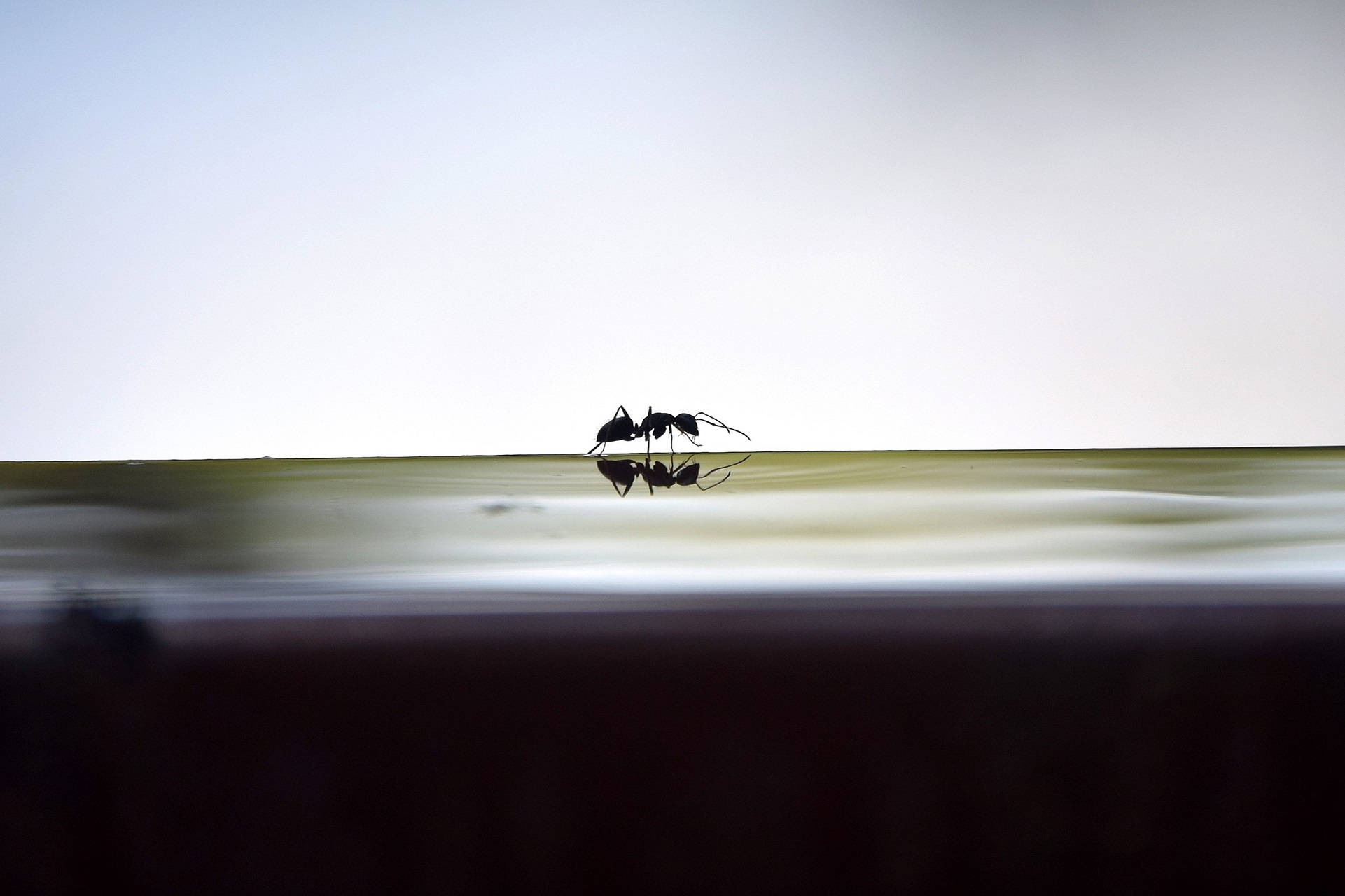Carpenter Ants
About 600 species of ants reside in the United States, but none is perhaps more infamous than the large black carpenter ant (Camponotus pennsylvanicus). In its natural habitat, this ant helps decompose decaying trees, but, once carpenter ants get inside buildings, they become annoying and destructive pests.
Identification
Carpenter Ants found in Massachusetts are black, shiny, and relatively large, ranging in size from one-quarter to three-quarters of an inch. Fertile males and females, which emerge in late spring or early summer to mate, have wings.
Life Cycle
Ants are social insects, occupying colonies that overwinter in a nest within a building or tree. Each colony has a queen, who produces eggs, and workers who tend the young, build and guard the nest, and forage for food. During the late spring and early summer, large numbers of winged males and females emerge from the nest to mate. The males then die, but mated females lose their wings and begin searching for new nest sites.
After finding and excavating a new nest site, the female seals herself into a small cavity and lays about 15 to 20 eggs. She tends the eggs, which develop into legless larvae. They pupate, and adult ants emerge from the tan pupa cocoons. When the new adults are old enough to care for the next brood, the queen produces more eggs, even though she has mated only once
Food
Carpenter ants mainly feed on honeydew secreted by plant-dwelling insects such as aphids. They also feed on dead insects, the juices of plants and fruit, meat, fat, and sweets. The workers eat the food, carry it back to the nest, and feed other ants. Workers can live up to six months without food. If a lack of food and water stresses the colony, the queen and a few workers can survive for long periods by resorting to cannibalism.
Nest Sites
A study of carpenter ant nests in the Northeast determined that 75 percent of nests occupy dead trees, and they play an important role in decomposition. Carpenter ants are usually noticed in the spring or summer when they seek mates or forage for food. Tree branches that brush against the building, clotheslines, woodpiles, or cable, phone, or electric wires can provide a route for the ants to enter and establish a new nest.
In homes, carpenter ants may nest without attacking structural wood. They can use voids in walls, or voids around windows and doors. When they do enter the wood structure of a house or building, it’s usually because dampness or rot has made the wood easy to excavate.
Situations & Solutions
We can blame most ant-related structural damage in the Northeast on carpenter ants. Unlike termites, carpenter ants do not eat wood but instead tunnel into it to construct their nests. While slow to cause much harm, they can do major damage without control. If you have chronic problem with carpenter ants, you may have wood that is frequently getting wet due to a leak. If you fix the leak, the carpenter ants will no longer find your home attractive.
Think You Have a Problem?
There are several signs that could indicate that ants may have nested inside your home:
- The presence of many large black ants inside.
- Small piles of loose, sawdust-like shavings.
- Small piles of frass (insect droppings) and/or sawdust in basements, closets, attics, around the foundation, under porches, and any area where there is moist wood.
If you can see the ants, observe them, especially outdoors. Foraging ants tend to wander, but ants returning to the nest often take a direct route. Watch to see where they go. If several enter the building at the same location, the nest probably resides nearby.
You can also place a sweet bait, such as jelly or honey, in an area where you frequently see ants. Put a tablespoon in a jar lid and then follow the ants as they return to the nest.
Eliminating The Nest
If a nest has been identified, you will want to take steps to eliminate it. Unfortunately, no nontoxic control methods exist and in many cases, you may need to hire a pesticide control expert to locate and treat a carpenter ant infestation.
When searching for a reputable service, ask the following questions and obtain two or more estimates before signing a contract:
- Are they licensed in Massachusetts (or the state you are in)? In Massachusetts, licensed applicators are required to have their license on them when performing a pesticide application.
- Does the service attempt to locate the nest before treatment? Will they apply pesticides only to the nest and surrounding area?
- Does it have written information about the pesticide provided, including a copy of the warning label? What risks do these chemicals pose to humans, pets, and the environment? Where and when will they apply the pesticides?
- Do they offer a guarantee? If so, how long? The guarantee should cover at least 90 days and preferably one year.
Prevention
To deter future infestations, remove and replace any moisture-damaged wood. Consider storing any firewood away from the house or garage, and trim any branches that touch your home (or that touch the electric and cable wires that lead into your home) to eliminate a path inside.



